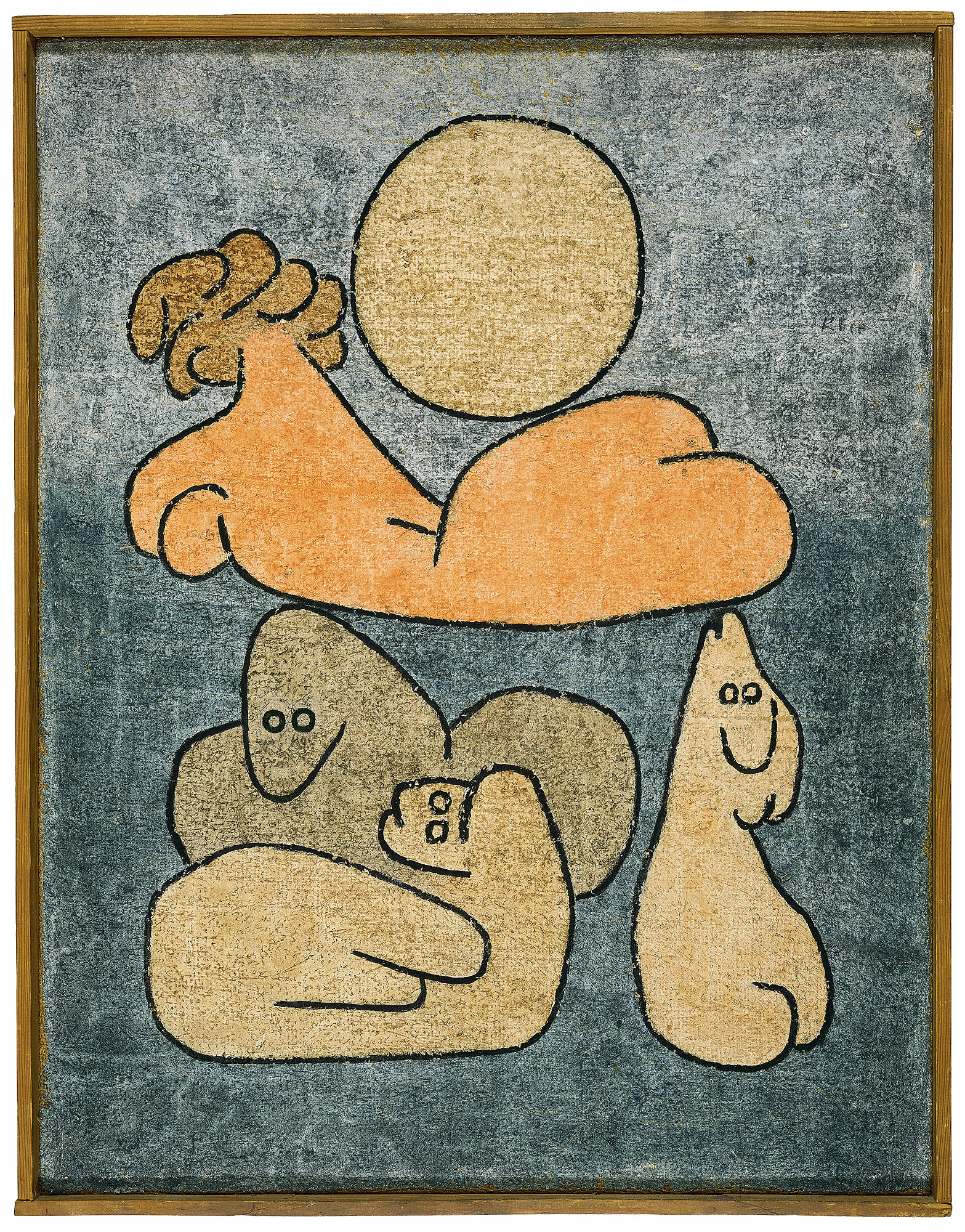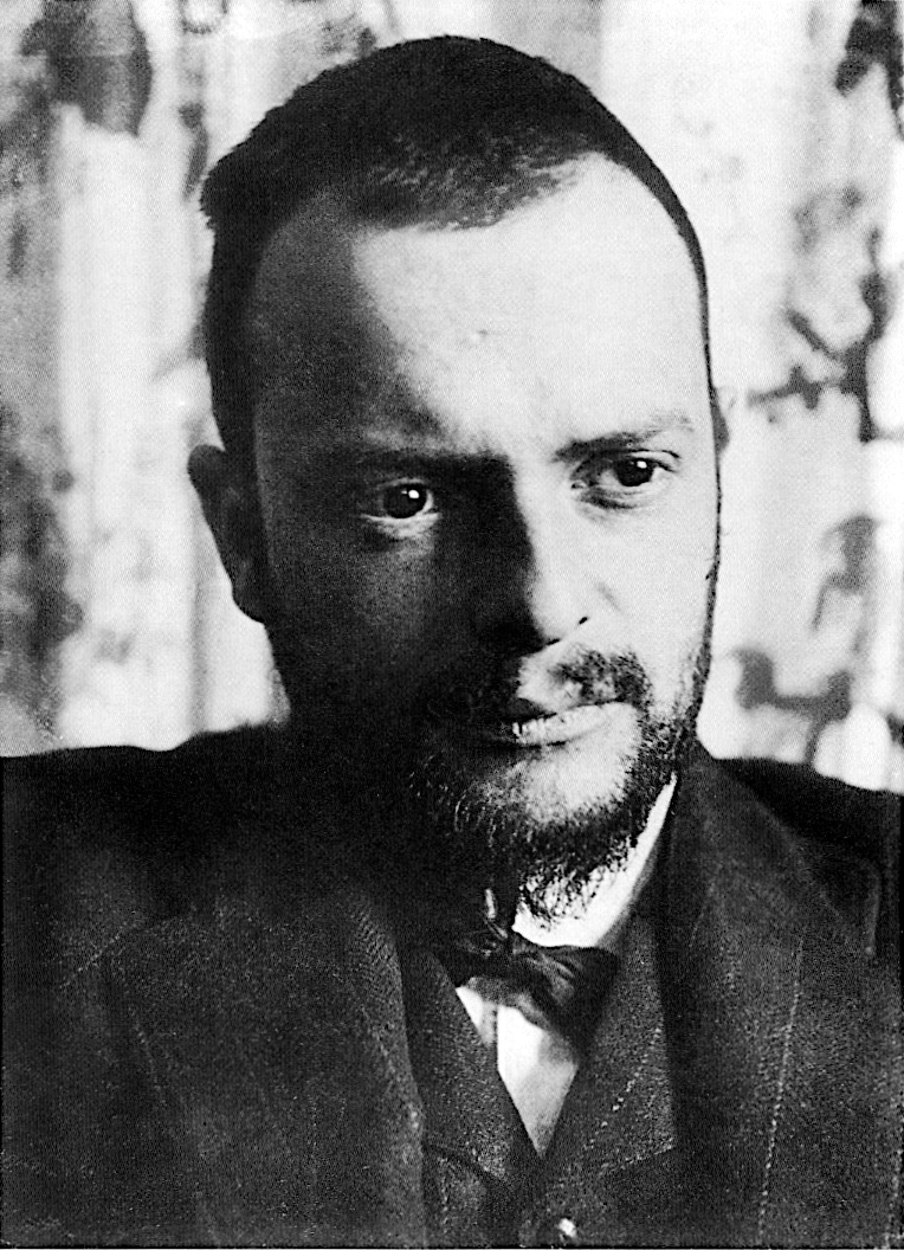We present today's work thanks to Zentrum Paul Klee in Bern—one of my dream museum destinations! :)
Paul Klee produced at least two preparatory works for this watercolor painting on jute. A pencil drawing and a watercolor on paper show exactly the same motif, but inverted. Klee probably transferred the motif to the new image carrier—jute—using a copying technique such as tracing.
Four peculiar creatures lie beneath the disc of a full moon. The slightly larger figure directly below the circle has turned its back towards us. It is reminiscent of reclining female nudes from art history—such as Jean-Auguste-Dominique Ingres’ Grande Odalisque from 1814. The other three figures lie underneath, two of them close together. Next to them is another upright figure that looks like a howling dog. The three smaller figures in particular are reminiscent of cute, clambering puppies or kittens.
The title tells us that a torso with its ‘family’ is shown here. And indeed all four figures are bodies without arms and legs. They consist of a head, the upper body, and a rear.
The use of the word torso suggests that Klee did not quite consider these creatures to be complete. Perhaps they are still developing or growing. Klee’s choice of tumorous forms also suggests this. This flowing, organic use of line appears in numerous works from his final creative years. The curved forms are reminiscent of things that are swelling and growing. A similar formal language can be found in modernist sculptures, such as those by Jean Arp and Henry Moore. In the case of Arp, an organic abstract language emerges directly from observing nature. Like Klee, Henry Moore possessed a collection of natural objects including shells, bones, and weathered pieces of wood and stones, which inspired his abstract formations.
P.S. To be up to date with DailyArt Magazine, remember to follow its Instagram!


 Paul Klee
Paul Klee